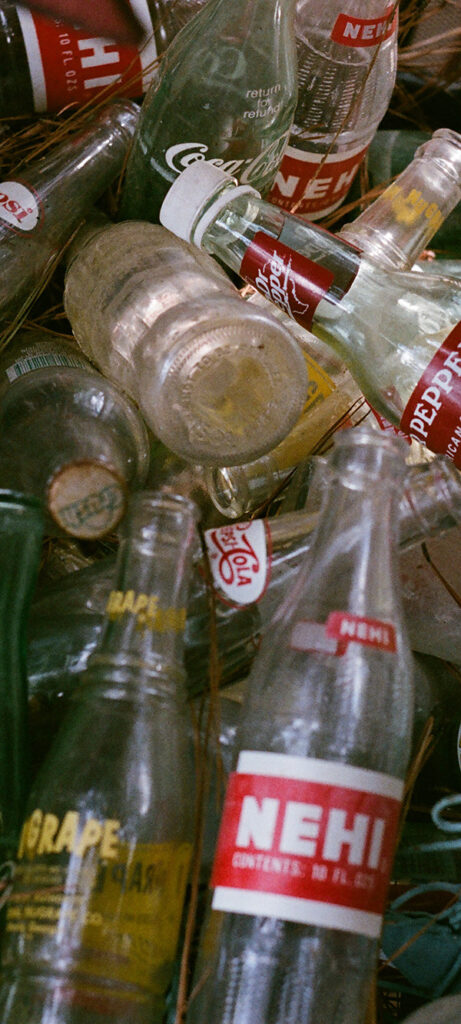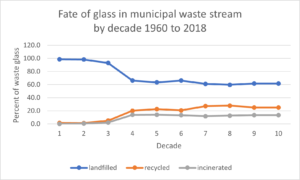solid waste 101

Glass
Glass is created by supercooling a mixture of melted sand and soda ash. Automated production of glass containers dates back to the late 1800s, and machines can now produce more than 600 containers per minute. Glass enters the waste stream as bottles and jars that contained food, beverages, and some cosmetics. Tonnage of waste glass nearly doubled from 1960 to 2018, when glass container weight reached approximately 12.3 million tons and comprised approximately 4.2% of municipal solid waste in the United States.
Most waste glass goes to landfills, where it occupies a great deal of space and takes thousands of years to degrade. Recycling efforts have been diverting 20-30% of discarded glass from landfills since the 1980s but leave substantial room for improvement. Returnable beverage bottles were the norm until the 1960s, when industry turned to “no deposit no return.” Reviving this technology would save considerable energy and landfill space, as reusable glass bottles can be refilled 50 times on average.
Glass jars and bottles are infinitely recyclable and can be melted and recycled endlessly to make new glass containers with no loss in quality. Damaged containers can be crushed into fragments, called cullet, which is then melted to manufacture new containers. Since cullet melts at lower temperatures than required to make “original” glass, recycling glass saves energy and reduces greenhouse gas emissions. Many recyclers collect different colors of glass separately since glass retains its color after reprocessing.
Glass-like materials such as Pyrex and ceramics cannot be recycled into pure glass, but can be combined with glass cullet and used for aggregate in bricks, concrete, and abrasives as a subbase for foundations, roads and parking lots, and retaining walls.

Glass recycling rates in Europe average 74%, with some countries achieving rates exceeding 95%. Converting to a more circular economy for glass in the United States is clearly an achievable goal.
Resources
Glass Bottles: A Brief History of Manufacturing (Container and Packaging)
Why Glass Recycling in the US is Broken (Chemical and Engineering News)
Why is Glass Recycling in the United States So Dismal? (Tablas Creek Vineyard)
User Guidelines for Waste and Byproduct Materials in Pavement Construction (USDOT)
The State of Recycling Markets in New Hampshire (NH Municipal Association)
How Long Does it Take for a Glass Bottle to Degrade in a Landfill? (Seattlepi)
Refillable Soda Bottles Used to be the Norm. Can They Come Back? (FastCompany)
Solid Waste Management Plan (NHDES-pdf file)
Stay in Touch
Join our email list to stay on top of the latest news on sustainable solid waste management, including action alerts for ways you can make your voice heard!
